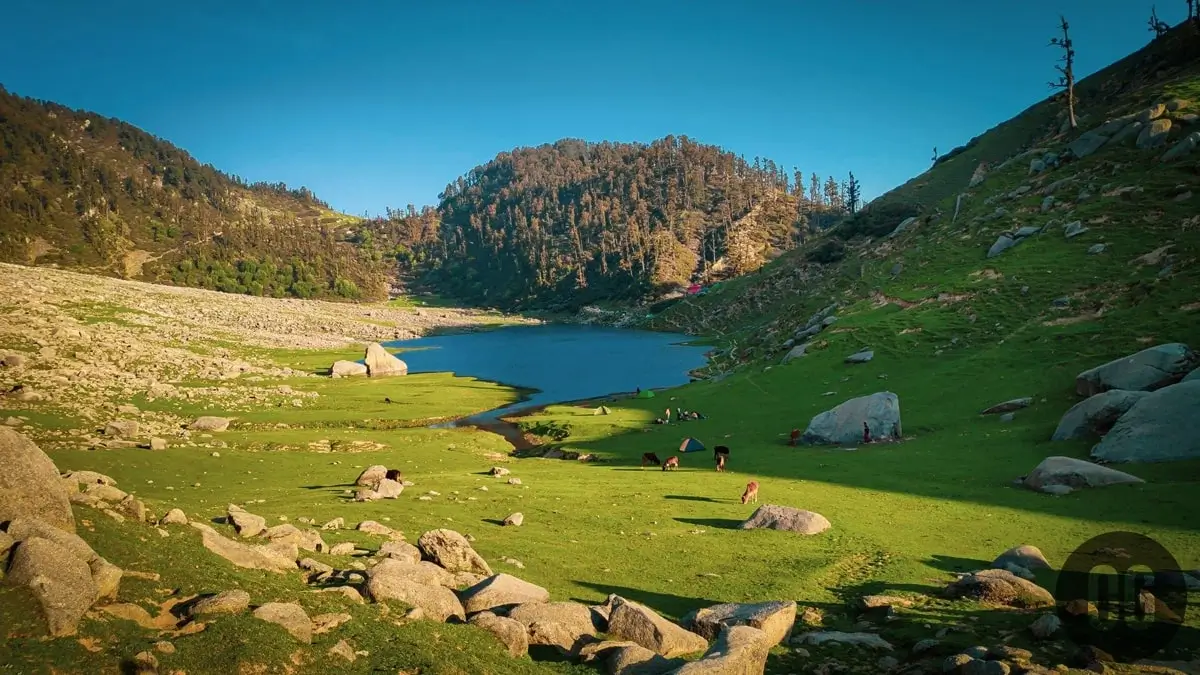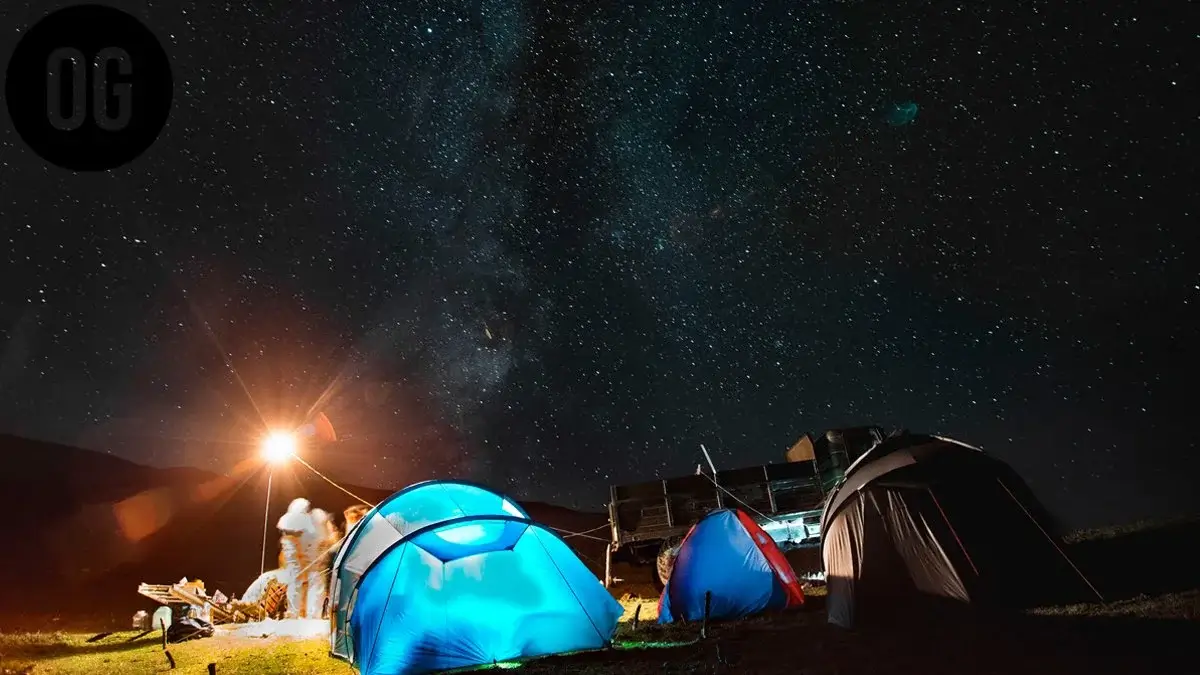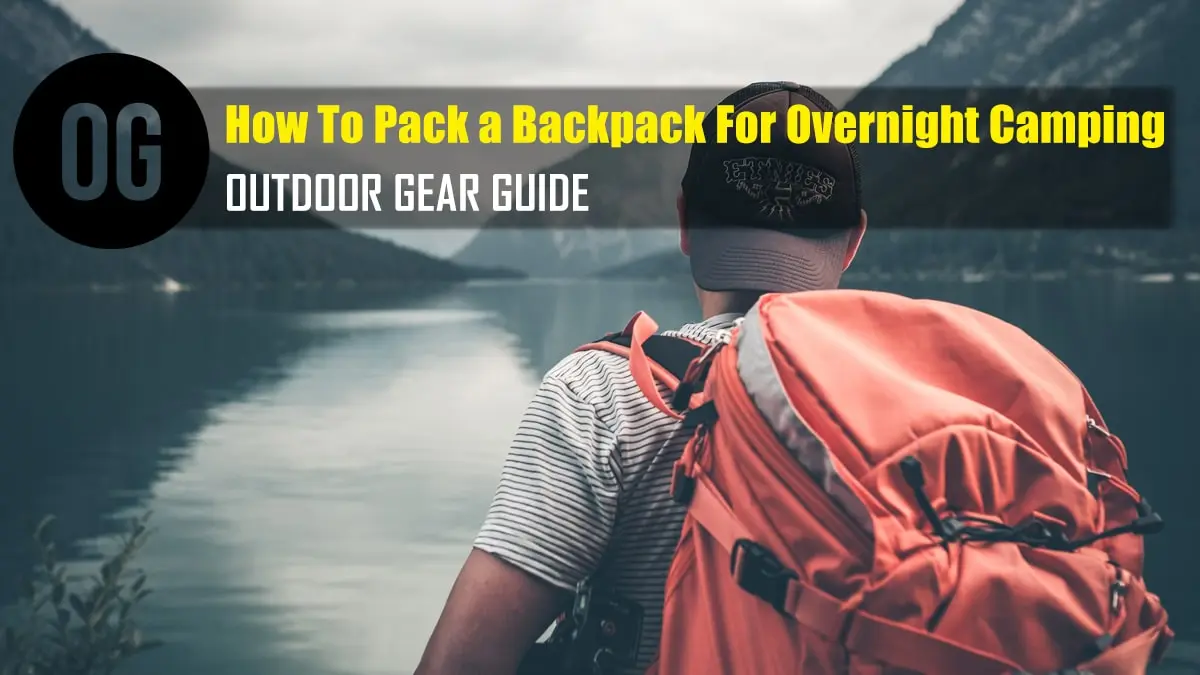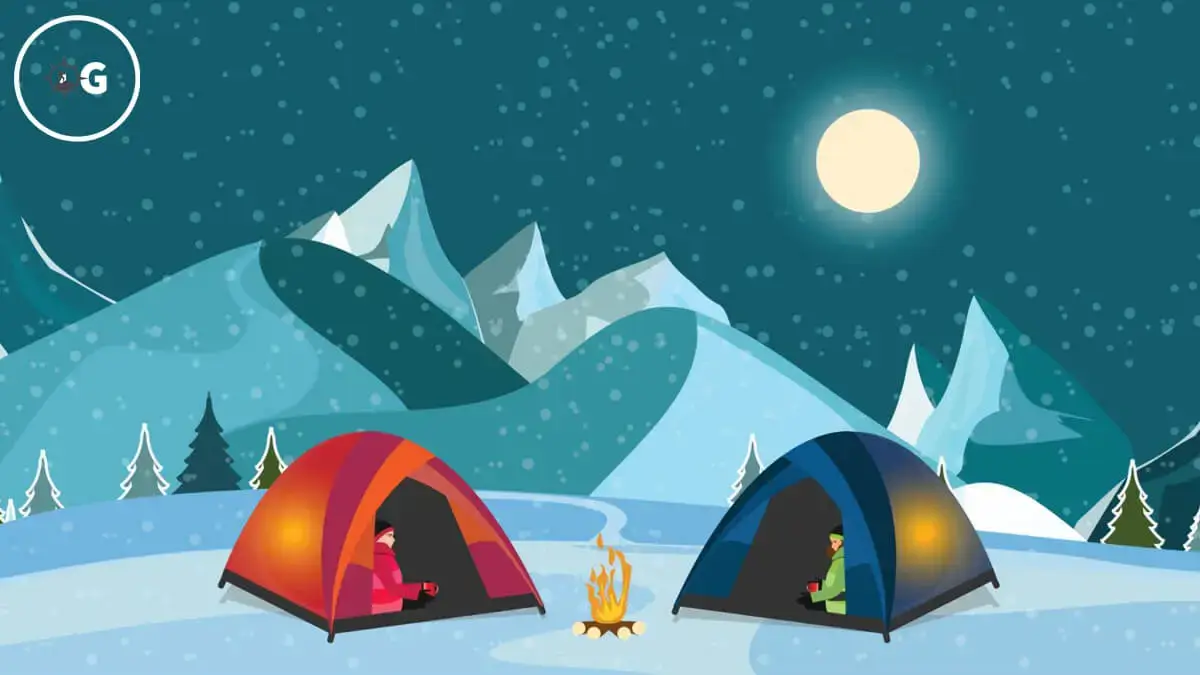Guide To Perfect Camping Tent For Beginners: 9 Features You Can’t Ignore
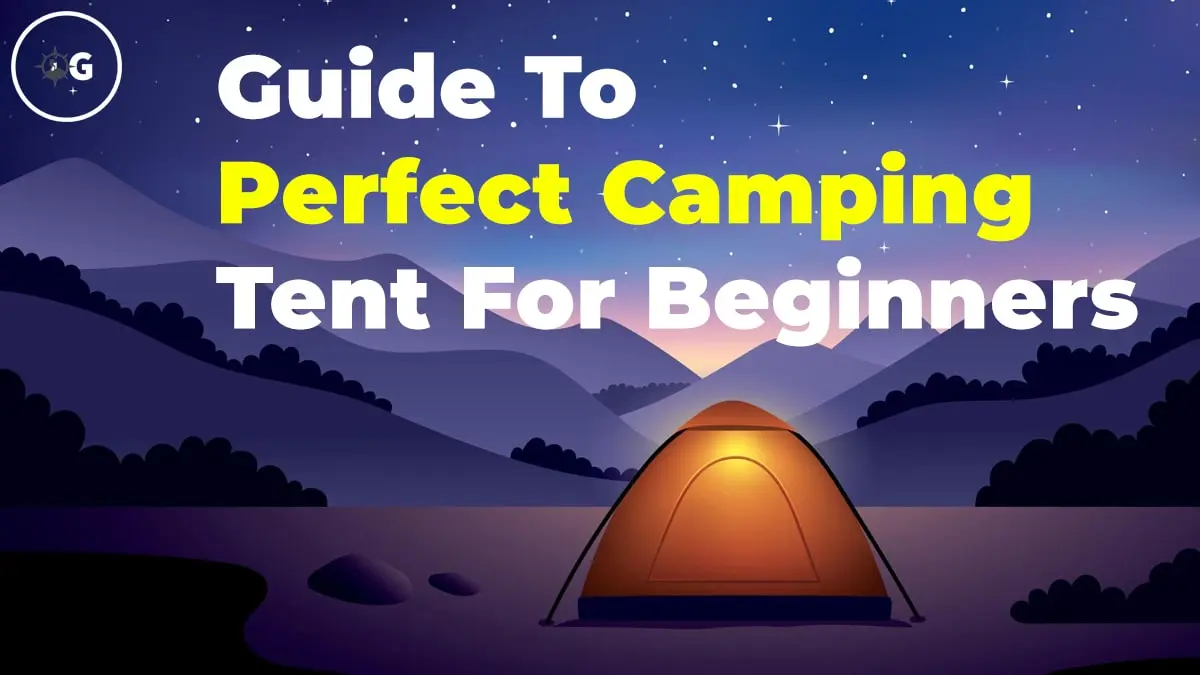
A Guide To Perfect Camping Tent For Beginners and outdoor enthusiasts. Selecting the ideal camping tent is a crucial decision and knowing which essential features to look out for can make or break your camping adventure.
Essential features when buying your best tent for camping and backpacking include size and capacity, seasonal rating, durable materials, weight for portability, easy setup, ventilation, weather resistance, interior organization, and budget considerations.
Table of Contents
In this guide to the perfect camping tent for beginners, we will outline some key considerations when purchasing one – so your next outdoor adventure will be comfortable and hassle-free.
Related: 7 Best Tents For Camping And Backpacking
Guide To Perfect Camping Tent For Beginners
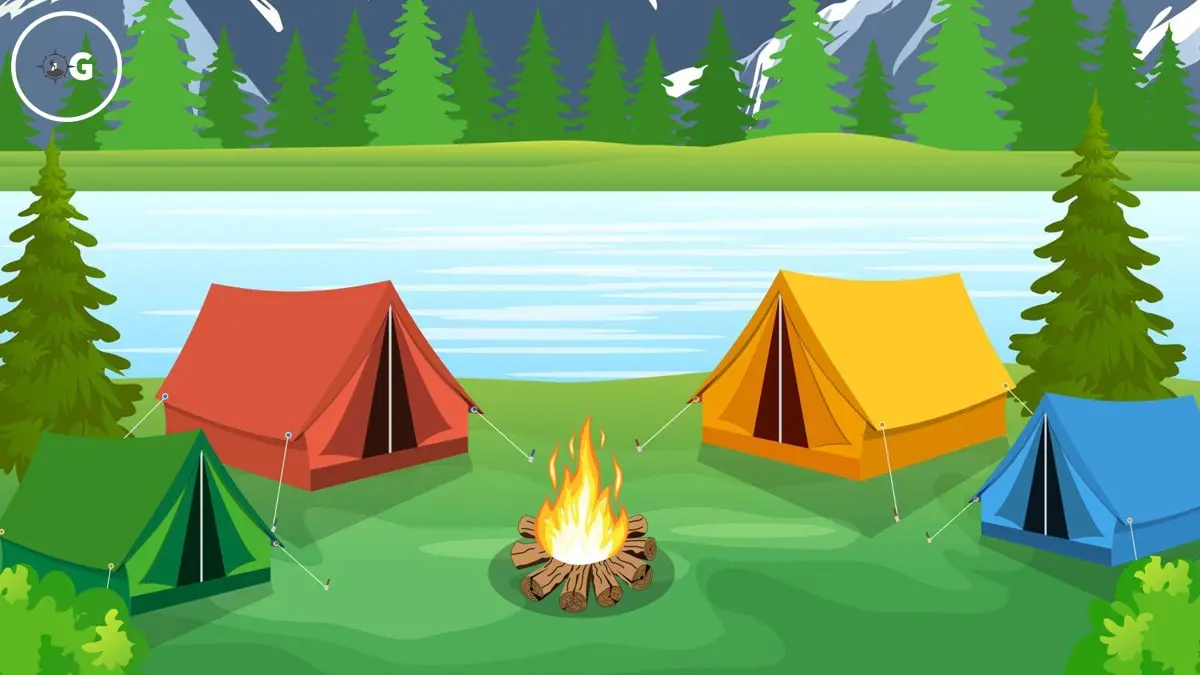
Size and Capacity
The size and capacity of a camping tent are crucial elements that can significantly alter your outdoor experience.
A guide to perfect camping tent for beginners will help you understand their effects on comfort is essential in selecting an adequate tent capacity to ensure a successful camping adventure.
Size Impact on Comfort: Your tent’s size directly affects its comfort on a camping adventure.
A larger tent provides more interior space, enabling campers to freely move about, change clothing, and store gear without feeling cramped; additionally, this extra room promotes better airflow which in turn reduces condensation levels for enhanced overall comfort.
Moreover, these larger tents often include multiple rooms or vestibules for privacy and organization purposes for different campers.
Importance of Appropriate Capacity: Guide to perfect camping tent for beginners efforts on selecting a tent with the appropriate capacity is vital for comfort, safety, and durability.
Overcrowding can result in sleeping discomfort due to limited sleeping space and storage for belongings; exceeding its capacity could even strain its structure and compromise stability – creating unsafe conditions in adverse weather.
Tips for Selecting the Appropriate Size: Group Size: Determine how many campers and their gear will stay overnight in the tent, then opt for one with an increased capacity rating than needed to provide ample comfort and storage space.
Tent Dimensions: Before choosing a tent for your group’s camping expedition, verify its floor dimensions and peak height will meet their needs.
Leasing out tents that feature multiple rooms or vestibules offers extra privacy and storage solutions.
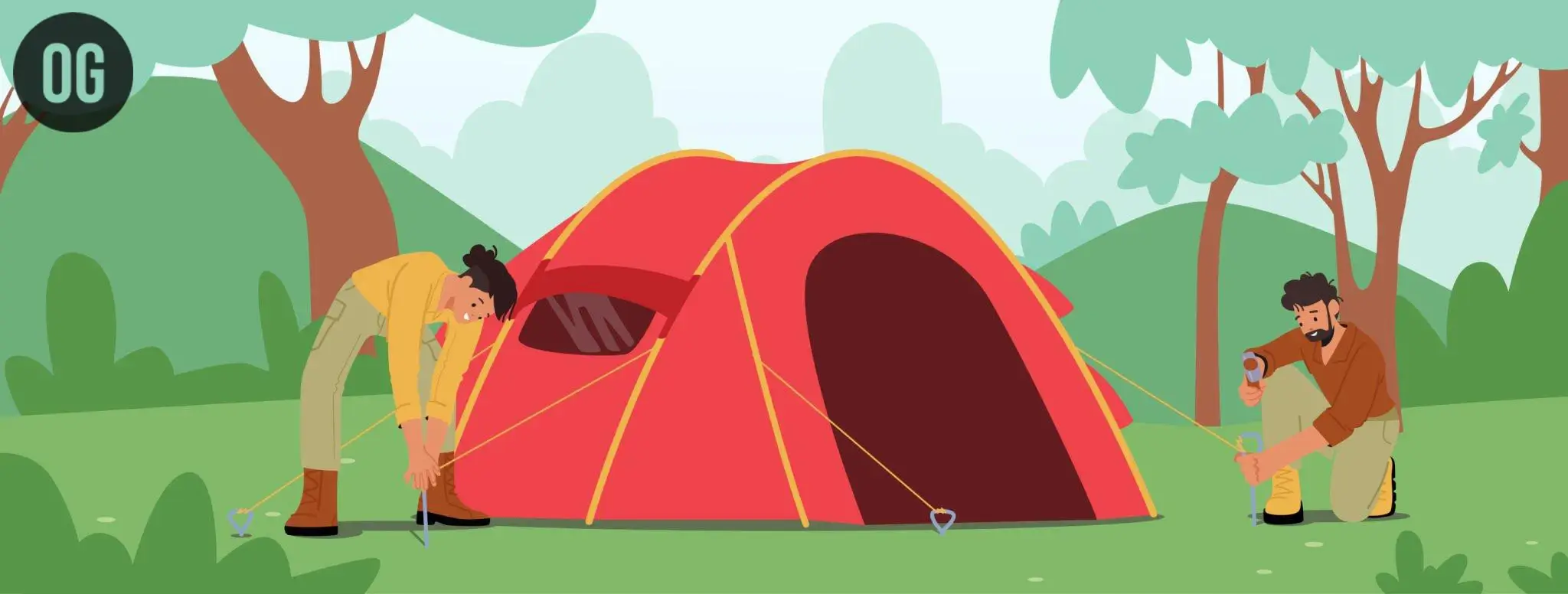
Seasonal Rating
Understanding seasonal ratings when selecting a camping tent is crucial to creating a comfortable and safe outdoor experience and this guide to perfect camping tent for beginners will show you the way to the best results.
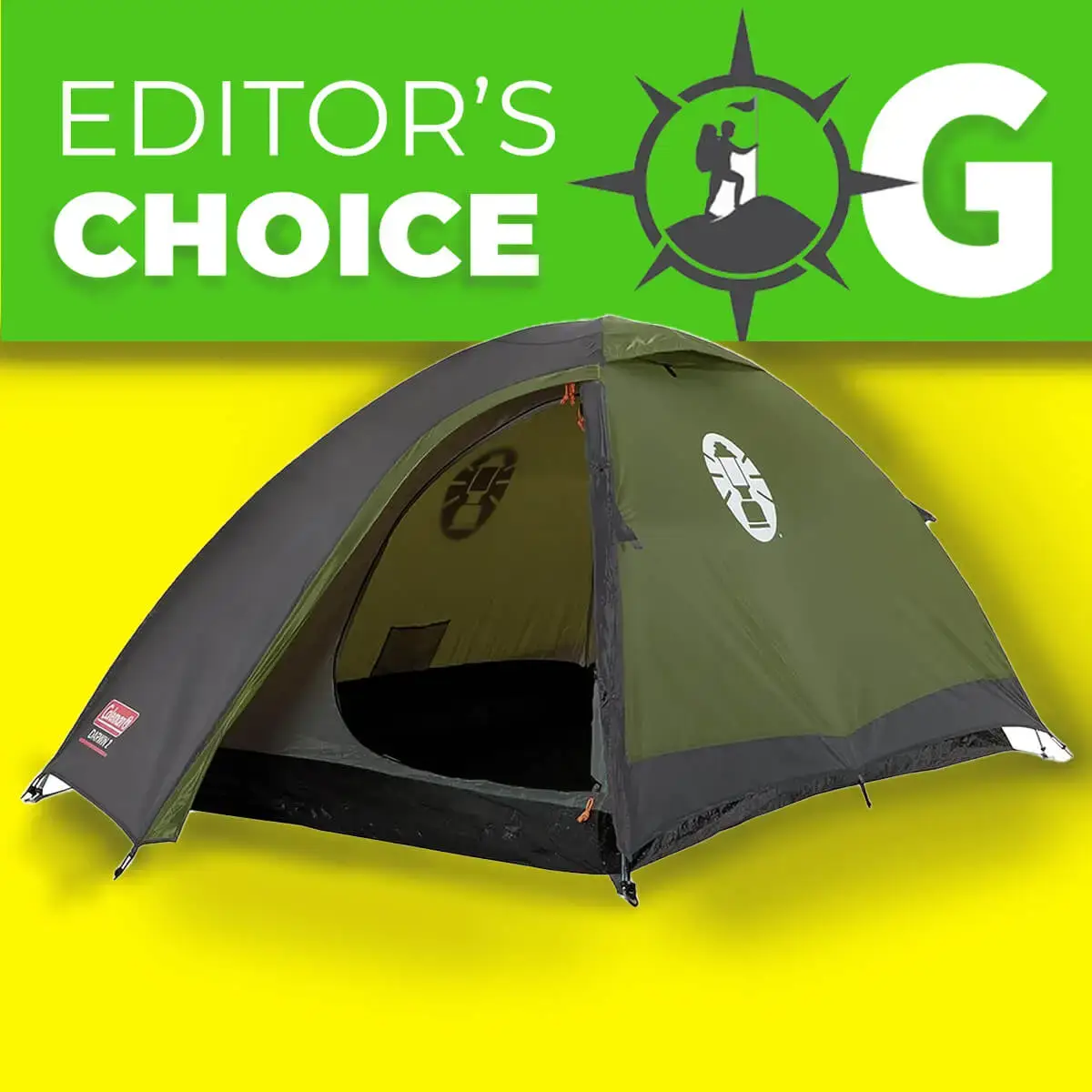
Coleman Darwin Camping Tent
The Coleman camping tent is our editor’s recommended all season best camping and backpacking tent. The Coleman Polyester Darwin 3+ Camping Tent emerges as a brilliant camping solution, particularly tailored for high-altitude escapades in the Himalayas.
Seasonal ratings categorize tents into different classes based on how well they meet specific weather conditions or seasons.
3-Season Tents: These tents are the most popular choice among campers. Intended to withstand spring, summer, and fall camping seasons with ease, they prioritize ventilation to keep cool nights from turning hotter while their rainfly protects from light rainfall their lightweight construction makes them suitable for backpacking adventures. Unfortunately, they may not withstand snow accumulation or extreme cold.
4-Season Tents: Also known as winter tents, four-season tents are specifically designed to withstand even the harshest environments.
Their tough frames, durable fabrics, and minimal ventilation to retain heat make them suitable for cold winter camping at high altitudes where heavy snow loads and strong winds pose threats.
3-4 Season Tents: These hybrid tents fill a niche between 3-season and 4-season models, providing more protection in harsher environments than usual summer outings, yet don’t reach winter camping standards.
Perfect for late fall and early spring camping trips when conditions can become more demanding but without reaching winter camping levels of comfort.
Selecting the appropriate seasonal rating for your tent is critical in providing comfort and protection in any camping condition.
Consider factors like the climate of your camping destination, the seasons you plan on camping during, and the activities you intend on engaging in while choosing your rating accordingly for an enjoyable outdoor adventure.
Now let’s move further in this guide to perfect camping tent for beginners and see about tent material and durability.
Tent Material and Durability
Materials used in camping tents play an integral part in their durability and overall performance, from nylon and polyester blends to canvas; all have different properties that influence durability.
Tent material options commonly include nylon, polyester, and canvas which all possess specific benefits for use when camping outdoors. Other factors affect durability such as wind speeds or exposure.
Whereas we can’t explain tent materials in this article guide to perfect camping tent for beginners as it will get too long and boring, we have explained in detail about camping tent materials and durability factors here.
Denier (D): Denier is used to measure fabric fiber thickness and strength, with higher denier fabrics being more resilient and heavier; for instance, a 70D nylon is generally stronger than 20D nylon.
Coatings: Tent fabrics may be coated with coatings such as polyurethane (PU) or silicone to improve waterproofing and UV resistance, leading to longer durability of their waterproof properties. High-grade coatings tend to offer greater waterproof protection.
Seams: Reinforced stitching and taped seams prevent water leakage and strengthen stress points, making the best quality seams essential to tent durability.
Zippers and Poles: Durable zippers and sturdy poles are essential components of a high-performing tent, so look for quality materials and construction in these areas. Key Considerations:
Camping Style: When backpacking, lightweight materials like nylon or polyester may be more appropriate, while heavier fabrics like canvas are great for car camping or extended stays. However, every camping style is not popular right now so if you want you can check out popular camping styles in India.
Weather Conditions: To make sure that you can camp comfortably regardless of any unexpected changes in climate conditions during your camping adventures.
Budget: To maximize affordability and durability while camping, find materials that meet all of your camping needs without busting your budget.
Weight and Portability
Weight and portability should both be major considerations when purchasing a camping tent, particularly if you plan to explore nature on foot or require something easy to transport.
Both factors can have an enormous effect on your camping experience and convenience.
When it comes to weight considerations:
Backpacking Tents: As backpackers strive to lighten their load, lightweight tents made of materials like silnylon or polyester are essential in providing comfortable transport over long distances.
The best backpacking tent for camping typically weighs two to five pounds making it manageable on any trail adventure.
Car Camping Tents: Campers using car camping tents typically have more flexibility when it comes to weight considerations when choosing their tent material, often opting for heavier materials like canvas despite comfort and space concerns – often making car camping tents between 10-30 pounds in weight! Our portable camping tents come in at around the same weight.
For Portability:
Backpacking Tents: These tents are created for portability. When packed away into stuff sacks, they fit easily into backpacks for transport.
Their poles may even be segmented for easy transport and set-up is usually straightforward.
Car Camping Tents: Portability may not be an issue when transporting car camping tents; however, setup should still be easy with color-coded components and instructions for quick assembly. There should also be clear considerations. Ultimately
Distance and Terrain: When hiking long distances or traversing challenging terrain, opt for an ultralight backpacking tent. Car campers may prefer spaciousness overweight.
Ease of Setup: No matter what kind of camping trip you plan to go on, select a tent with easy assembly to ensure a seamless camping experience.
Make sure that you practice setting it up at home before heading out on your journey so everything runs smoothly on vacation.
Packability: Backpackers should opt for tents that pack down compactly, while car campers should consider available space in their vehicle as storage for tents.
Group Size: To make the transport of tents and components more manageable, larger groups may need to distribute their weight among multiple campers to reduce transportation burdens.
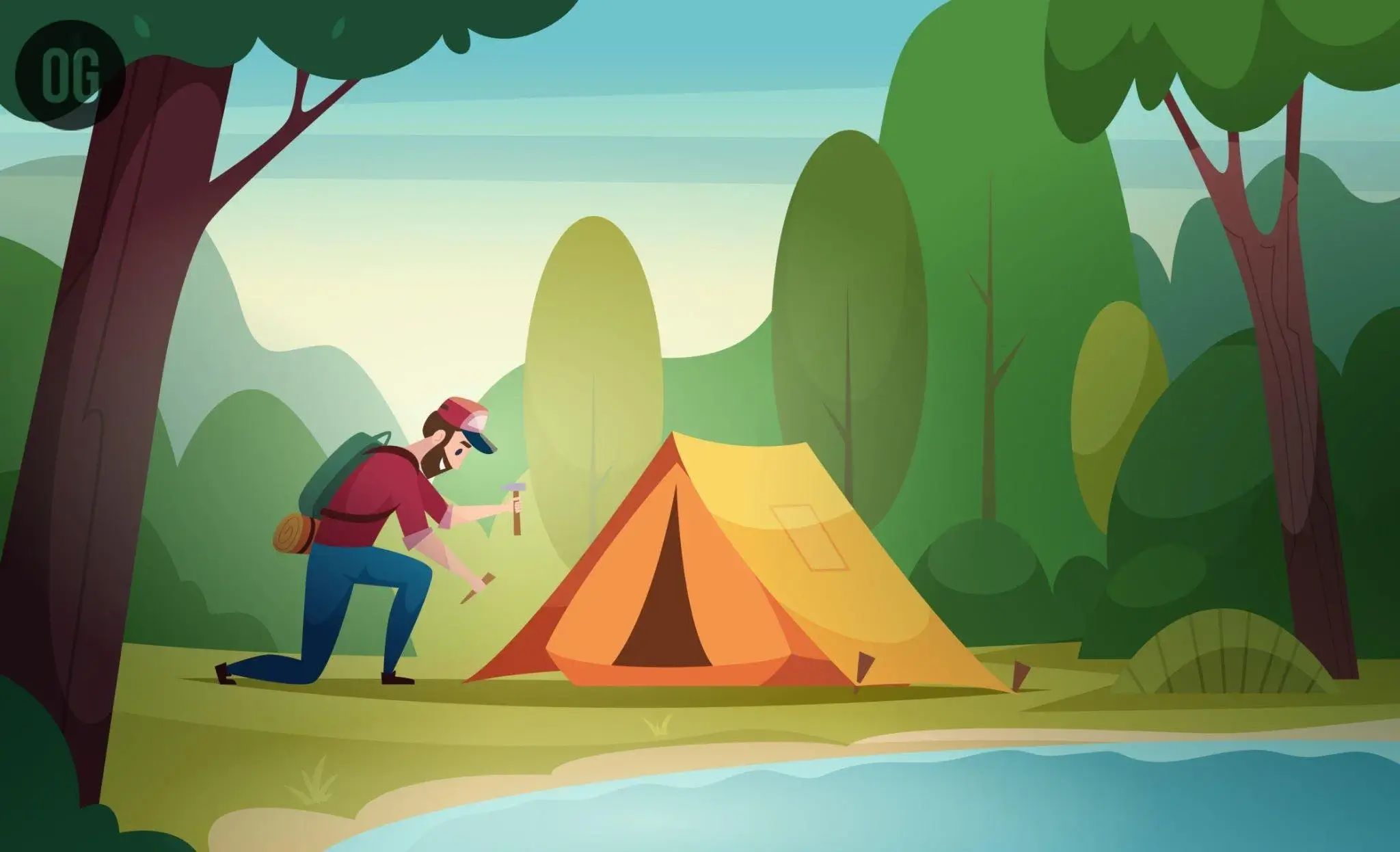
Setup and Assembly
Installing your tent quickly and efficiently can make a profound impactful statement about the experience you had outdoors.
Proper assembly not only saves time but also ensures a safe and comfortable shelter. Read our 13 Comprehensive Steps to Setting up and Packing up a Camping Tent.
Here, in the guide to perfect camping tent for beginners we explore its significance while offering tips to ensure a seamless camping adventure experience.
Importance of Easy Setup:
Time Efficiency: Time-efficient setups allow for less time and effort spent at the campsite, which means more time can be dedicated to exploring nature or simply unwinding at your leisure.
Minimizing Stress: Frustrating or complex tent assembly can cause undue strain and ruin the camping experience for beginners or families, especially for novice campers or novice tent setups.
For optimal set-up and assembly experience:
Here the guide to perfect camping tent for beginners gives you five helpful tips for making set-up and assembly smoother:
Practice at Home: Before your camping adventure, become familiar with your tent’s setup process by practicing in your backyard or living room to become comfortable with its assembly process.
If possible, create a mock setup event so that the procedure feels seamless to you.
Read and Follow Instructions: Even experienced campers should read the tent setup instructions thoroughly.
Every tent is different, and reading its setup manual provides invaluable details that may save time when setting up camp.
Verify Your Components: Before leaving home, verify that all necessary components – poles, stakes, guylines, and rainfly – have been assembled. Missing parts can create serious disruption in your setup process.
Color Coding: Some tents feature color-coded components to simplify assembly. Pay attention to these color cues for a hassle-free setup!
Set Up in Daylight: For easier and safer setup, aim to arrive at your campsite during daylight hours for setup. If necessary, headlamps or lanterns should provide additional illumination during any dark setup sessions.
Clear Ground: Select an open and level area to place your tent, free from rocks, sticks, and debris that could compromise its surface.
Consider covering it with a ground tarp or footprint to safeguard its bottom from wear-and-tear damage.
Secure Stake Points: Secure the corners and guylines firmly to keep them from shifting or collapsing in wind or rain, as this will help prevent them from shifting or collapsing during wind or rainstorms.
Weatherfly and Ventilation: In case rain is imminent, always attach the rainfly for additional protection; additionally ensure there is sufficient ventilation within your tent to minimize condensation within.
Experience Packing: Packing your tent correctly can save time when breaking camp. Roll or fold it to ensure all components fit back into their storage bags neatly.
Ventilation and Condensation Management
Proper ventilation and condensation management are often underestimated aspects of camping tent selection, yet they play a crucial role in the comfort and well-being of campers.
These factors provided in the guide to perfect camping tent for beginners influence the airflow inside the tent and can significantly impact your overall camping experience.
Ventilation:
Importance of Ventilation: Adequate ventilation helps regulate temperature, reduce moisture buildup, and improve air quality within the tent.
It prevents the interior from feeling stuffy and minimizes the risk of condensation, especially during colder nights.
Mesh Panels: Many modern tents feature mesh panels on windows and doors. These panels promote airflow while keeping insects out, allowing for comfortable sleeping even in warm weather.
Adjustable Ventilation: Some tents offer adjustable vents, allowing you to fine-tune airflow according to your comfort level and weather conditions. This flexibility is especially beneficial during unpredictable weather.
Condensation Management:
Understanding Condensation: Condensation occurs when warm, moist air inside the tent meets cooler surfaces, like tent walls or the rainfly. It can result in wet gear, clothing, and discomfort.
Rainfly Usage: Proper use of the rainfly can mitigate condensation. Leave it off on warm, clear nights to maximize airflow. On chilly or rainy nights, secure the rainfly to trap warmth and keep moisture out.
Ventilation Strategies: Use tent vents, if available, to allow moisture to escape. Positioning the tent on well-drained ground also helps reduce ground moisture.
Breathability: Choose tents with breathable materials to minimize condensation. Canvas and cotton tents are less prone to condensation compared to single-wall nylon tents.
Internal Condensation Management: Wipe down wet surfaces with a cloth or towel to minimize condensation buildup inside the tent. Consider using a moisture-absorbing product like silica gel.
Gear Placement: Keep wet gear and clothing away from the tent walls to prevent them from absorbing moisture.
Sleeping Bag Ventilation: Ensure your sleeping bag has proper ventilation options like a two-way zipper to allow for airflow when needed.
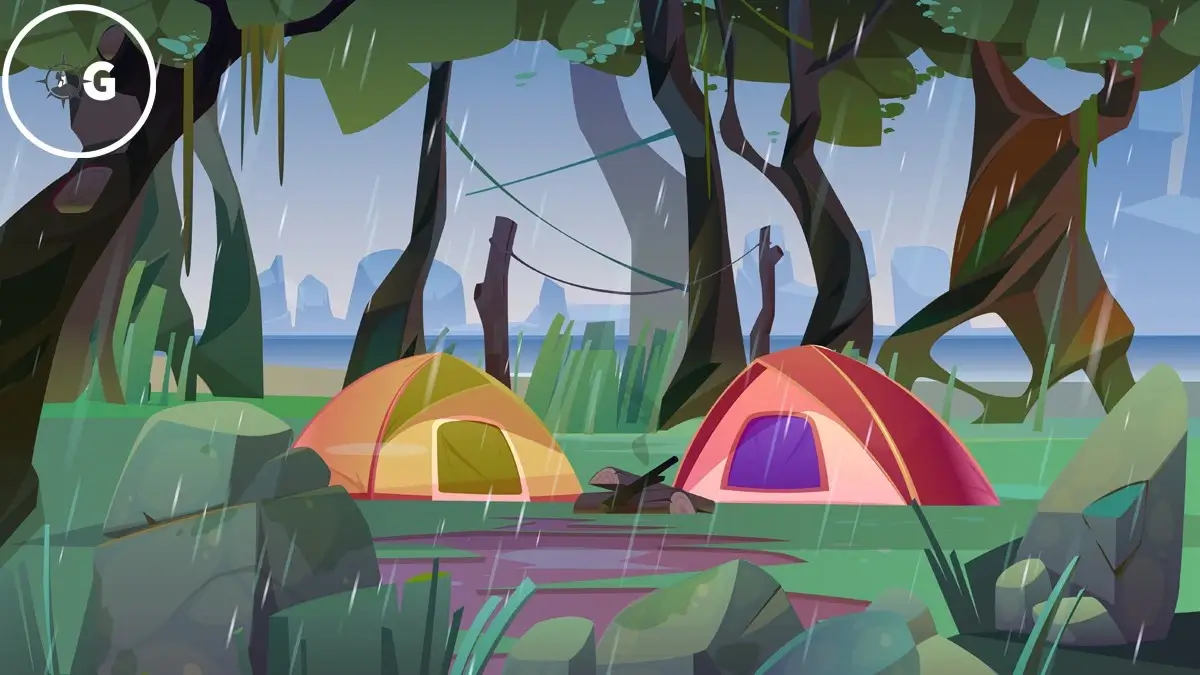
Weather Resistance
When venturing into the great outdoors, your camping tent is your first line of defense against nature’s elements.
Weather resistance is a paramount consideration in selecting the right tent to ensure your comfort, safety, and enjoyment during various outdoor conditions.
So, in the guide to perfect camping tent for beginners we provide you with 12 crucial factors:
Factors Affecting Weather Resistance:
Rainfly: A high-quality rainfly is essential for keeping rainwater out of your tent. Look for a full-coverage rainfly that extends over the entire tent, including the vestibule area.
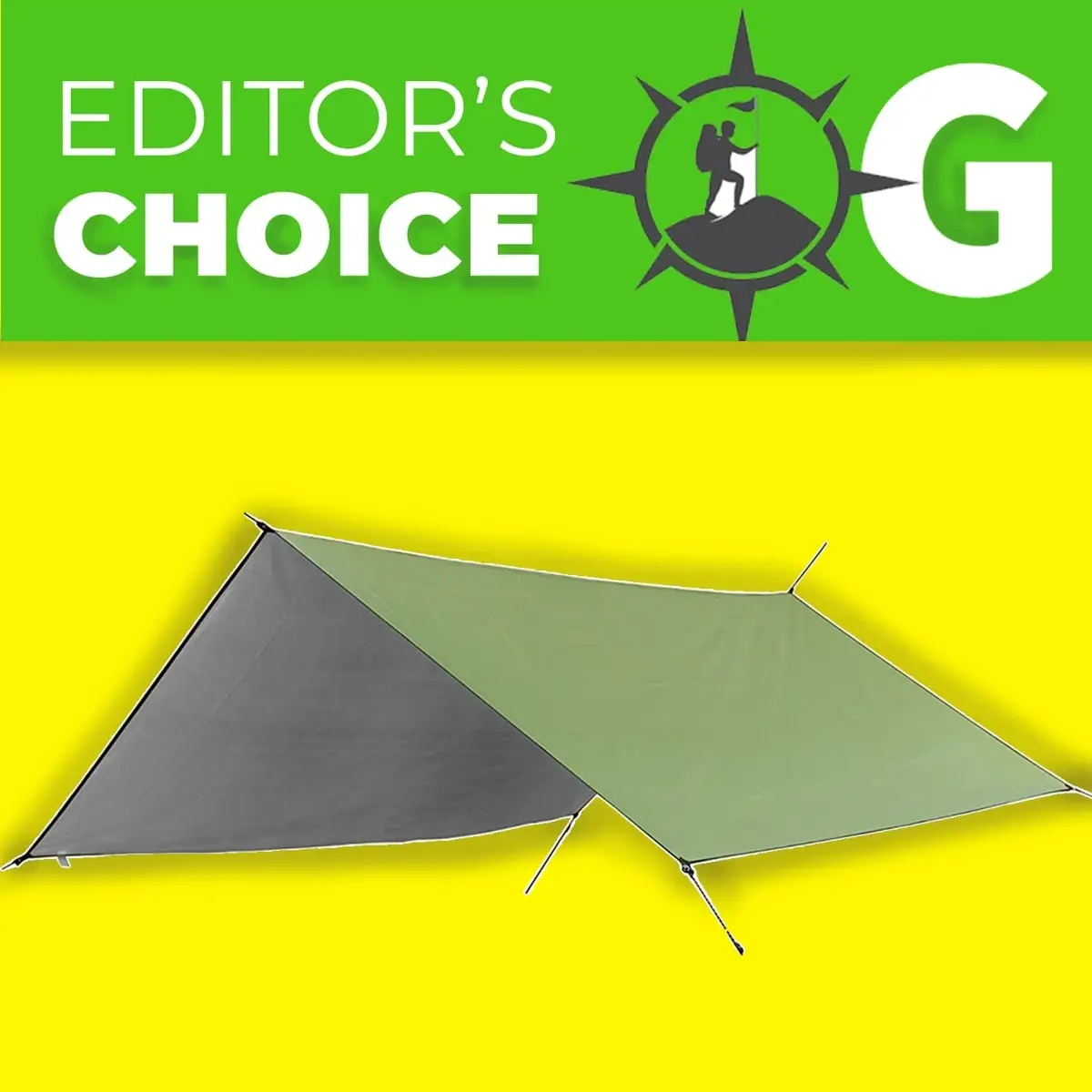
WoneNice Camping Rainfly Shelter
WoneNice 10x 13 Ft Camping Hammock Tarp provides reliable shelter for outdoor enthusiasts. Crafted from durable 210D embossed Oxford fabric, it provides outstanding tear resistance and waterproofing properties while offering ample coverage, UV protection, adjustable tension settings, rain and wind protection as well as being lightweight enough to be carried easily in its carrying pouch for any adventure.
Waterproof Materials: The tent’s fabric should have a waterproof coating, typically made of polyurethane (PU) or silicone. A higher hydrostatic rating indicates better waterproofing.
Sealed Seams: Check that all seams are sealed or taped to prevent water from seeping through the stitching holes. Untaped seams are potential entry points for rain.
Zippers: Quality zippers with storm flaps are crucial for keeping rain out of the tent’s openings, such as doors and windows.
Floor Material: The tent floor should be made of waterproof material to prevent groundwater from seeping in during wet conditions.
Ventilation: While sealing the tent against rain is essential, adequate ventilation prevents condensation buildup. Look for tents with vents that can be closed during rain or opened for airflow during dry weather.
Weather Resistance Ratings:
Hydrostatic Head (HH): This measurement indicates how waterproof a fabric is. A higher HH rating, such as 1,500mm or more, indicates better waterproofing.
Wind Resistance: Tents should be designed to withstand strong winds. Geodesic or dome-style tents are more wind-resistant than cabin-style tents.
Tips for Weather-Resistant Camping:
Site Selection: Choose a well-drained campsite and position your tent on high ground to avoid water pooling around it.
Pitching: Properly stake and guy out your tent to maintain its shape and stability in windy conditions.
Regular Maintenance: Check and reapply the seam sealer as needed to maintain the waterproof integrity of your tent.
Weather Forecast: Stay informed about the weather forecast for your camping location and be prepared for changing conditions.
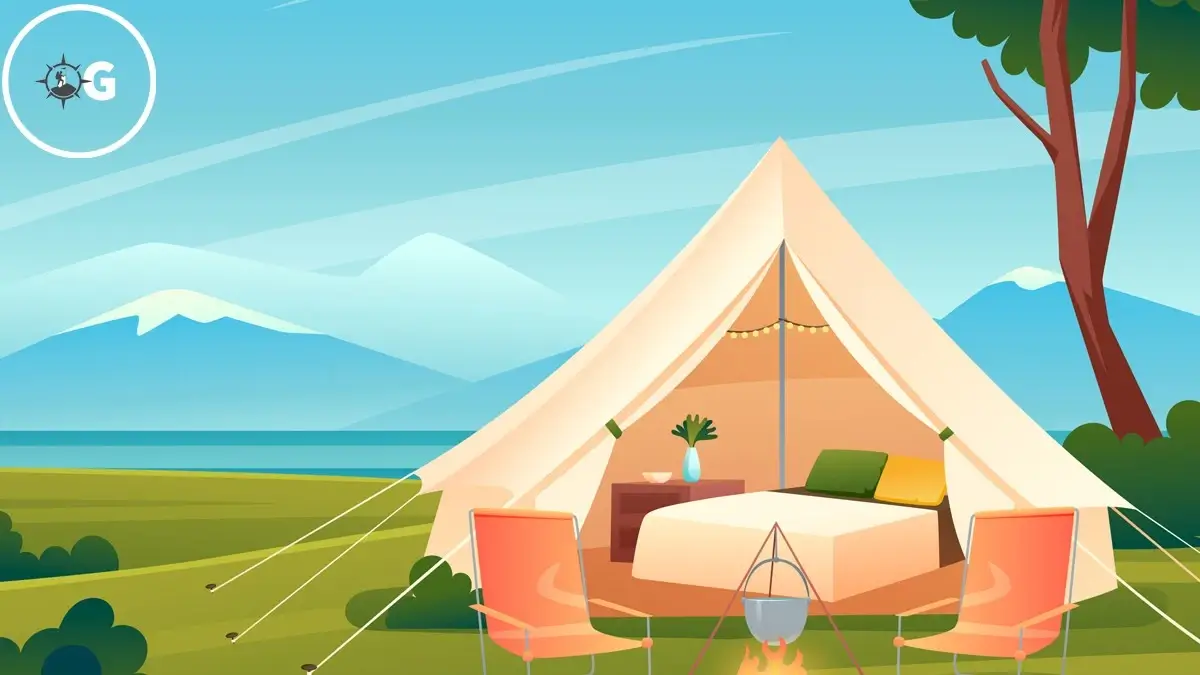
Interior Features
Interior features of your camping tent play an essential part in creating an enjoyable camping experience, providing comfort and organization during outdoor excursions.
In the guide to perfect camping tent for beginners, we explore some essential interior features to look for when selecting a tent.
Interior Space: For maximum comfort and freedom of movement, tents that offer enough room for sleeping and gear storage can be especially helpful. Furthermore, certain tents feature multiple rooms or dividers for additional privacy.
Storage Pockets: Interior storage pockets provide the perfect place for organizing and accessing essentials like headlamps, smartphones, and books.
Gear Lofts: Many tents feature overhead storage compartments called gear lofts for keeping gear off of the tent floor and creating more living space. These gear lofts come standard on many tents.
E-Port: An electrical port allows power cables to enter your tent, providing electricity for lighting or charging devices.
Hanging Hooks and Loops: Providing easy storage solutions, hanging hooks and loops allow lanterns or gear to remain hanging while keeping the floor clear and well-lit. Some tents even include built-in LED lighting systems.
Vestibules: Vestibules are covered areas outside your tent door that provide an efficient and tidy storage solution for dirty shoes, backpacks, or cooking equipment without cluttering up the sleeping area itself.
By placing these essential storage compartments there, vestibules allow you to keep the interior neat and organized.
Ceiling Height: Tents with higher ceilings create a more spacious feel, making it easier to change clothes inside the tent.
Room Dividers: Some tents offer removable or zippered room dividers so you can create separate sleeping areas for increased privacy.
Windows and Skylights: Tents with windows or skylights not only offer views of their surroundings but also help improve ventilation and lighting inside.
Color-Coded Setup: When setting up large or complex tents, color-coded instructions or components can make assembly much simpler and quicker.
Reflective Guy Lines and Zippers: Reflective elements on guy lines and zippers can increase visibility in low-light environments, decreasing the risk of trips or accidents due to poor visibility.

Price and Budget
Price and budget considerations should always be top of mind when purchasing a tent for camping and that’s what we will explain in this section of the article the guide to perfect camping tent for beginners.
Being aware of how these costs impact each other is key to finding an investment worth your while – here is how you can navigate this terrain and make an informed decision: Factors Affecting Tent Prices:
Brand and Reputation: Established brands often command higher price tags due to their reputation for quality and durability. Size and Capacity: Tents with more features can cost more.
Seasonal Rating: 4-season or expedition tents typically command higher prices due to their more advanced construction.
Materials: Tents made with premium materials like ripstop nylon or lightweight alloys tend to cost more.
Features and Budget Considerations: Tents with additional features like multiple rooms, gear lofts, or advanced ventilation systems tend to cost more.
Set a Budget: Before shopping for tents, set your budget. This helps narrow down your options and stay within your means.
Prioritize Needs: Before shopping, identify the essential features you’ll require based on your camping style and conditions. Avoid paying for features you won’t use.
Consider Longevity: Spending more on a higher-quality tent that lasts longer can prove cost-effective in the long run, requiring fewer replacements over time.
Sales and Discounts: To find an economical tent purchase option, keep an eye out for seasonal sales, clearance events, or discounted offers that may offer one.
Used Tents: For those on a tight budget, gently used tents could be the answer. Just be sure to inspect it carefully for signs of wear or damage before purchasing.
Accessories: When budgeting for tent accessories such as footprint, stakes, and guylines, don’t forget to include the budget for essential tent components like footprint, stakes, and guylines that will ensure proper setup and weather resistance.
Warranty: Before purchasing any tent product it’s wise to research its warranty terms as more extended warranties provide peace of mind about your investment.
Renting: If camping is something that interests you on an occasional or experimental basis, renting may be the more economical choice.
Conclusion
So, here we conclude the article Guide To Perfect Camping Tent For Beginners. Selecting an ideal camping tent requires careful consideration of your individual needs, camping style, and budget.
By considering factors like size, weather resistance, interior features, and price; you can discover one that enhances outdoor experiences while staying within financial means. Have fun camping!
Please feel free to provide your valuable thoughts about this article Guide To Perfect Camping Tent For Beginners in the comment section below.

FAQs: Guide To Perfect Camping Tent For Beginners
What is the main thing to look for when purchasing a tent?
When purchasing a tent, prioritize size (capacity), weather resistance, and ease of setup to ensure it suits your needs and provides a comfortable camping experience.
What is the most common type of tent for camping?
The most common type of tent for camping is the dome tent, known for its easy setup, versatility, and ability to accommodate various camping styles and conditions.
What are most camping tents made of?
Camping tents are typically made of materials like polyester or nylon for the tent body and rainfly, with fiberglass or aluminum poles for structure, ensuring durability and weather resistance.
What tent shape is best?
The best tent shape depends on your camping needs. Dome tents offer versatility and weather resistance, while cabin tents provide spaciousness. Tunnel tents are great for backpacking due to their lightweight design.
What color of the tent is better?
The ideal tent color varies with camping conditions. Neutral colors like green or brown blend into natural surroundings, while bright colors can aid visibility in emergencies or low-light situations.
What is a good-sized tent?
A good tent size depends on the number of occupants and gear. A 2-person tent is compact for couples, while families may prefer 4-6-person tents for extra space and comfort. Avoid cramped sleeping conditions or disturbances from others. A rule of thumb suggests 20 sq ft per person in a tent, but consider it a minimum when shopping for comfort.

